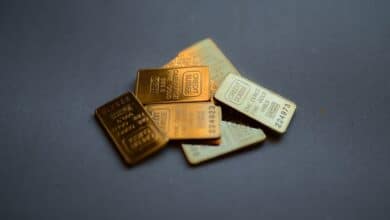How to Tell If You’re Buying Fake Gold

Precious, precious gold bullion is a fantastic investment, but there is the odd seller out there who would happily take advantage of somebody’s ignorance when buying. So if you’re in the market for gold bullion, why not read over these few easy tests you can use on the go to check the authenticity of the item, lest you get sold down the river by a savvy con-artist.
Check the density
Gold and silver are by far some of the densest metals around, which makes for a relatively easy test. If you have an item of relative size, you can compare their weight to get a pretty good idea of whether or not the item is a fake.
Another way to test the density is to drop the item in a glass of water; gold should sink immediately because of its density. If you are buying from a private dealer and things seem a little fishy, ask yourself why they wouldn’t sell gold bullion in Melbourne to trusted buyers, if things don’t add up then just walk away.
Is it magnetic?
Gold is not at all conductive, so carry a magnet with you when you go to test the item. Since bullion should be as pure as you can get, there should be no magnetic materials in the item.
If it turns out to be magnetic, you know that someone is trying to take you for a fool. This is handy when buying large bars of the metal, since it is fairly easy to drill into them and replace the precious insides with an imposter that would never otherwise be noticed, imposters which are usually magnetic.
Does it discolour your skin?
Pure gold should have no effect on the skin, unlike other metals like brass or copper which cause a discolouring or green stains. This is similar to performing an acid test (if you have a kit) which when applied sparingly to the gold would go green if it is fake. Contact us at www.goldbuyersmelbourne.com.au for more information on acquiring an acid testing kit to find out for yourself.
Grooves and relief
When it comes to coins of bullion, the grooves on the edges and the amount of relief on the coin can tell you a lot. Relief refers to the indentation of the markings on the metal. If the bullion is authentic then the coins should stack up neatly, unhindered by the embossed surface.
Considering how difficult this is to replicate, fakes often won’t stack comfortably due to the high rise of the etchings.
Keep an ear out
The ping test, as it is often called is also a good way to tell if your bullion is fake. Tapping on the gold with a metallic object should cause the bar or coin to chime, again due to the density. Regular metals often sound very dull when they are tapped in comparison to gold and silver which should ring like a bell.
If you aren’t musically impressed by the piece, then it is very likely that other metals within it are causing the dull sound, and it therefore is not bullion.
Have the item appraised
The only way to tell for certain would be to take the item to a dealer that you can trust. Their expertise, equipment and experience make for the surest of assessments. It is best not to take your seller’s word for it, and if they won’t trust you enough to allow you to take the item for an appraisal, then there is no reason for you to trust them enough to buy from them.
For added peace of mind, conduct more than just one of these tests on the item, and the latter one, taking it for an appraisal should definitely be considered before you hand over your hard earned cash. There’s no point in rushing into something like this, bullion costs a lot of money, and you can be sure there will be no exchanges if you have been cheated.



